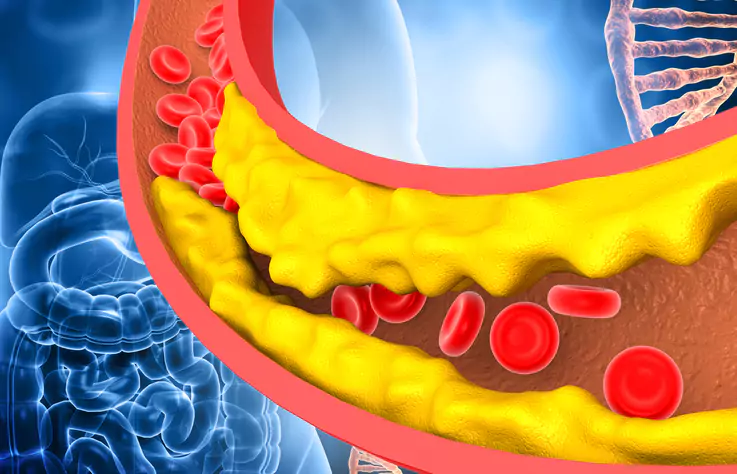





8 Steps to Weight Loss in type 2 diabetes


Table of Contents
- The Importance of Weight Management in Type 2 Diabetes
- Understanding Insulin Resistance in Type 2 Diabetes
- The Impact of Weight on Blood Glucose Control
- Successful Weight Loss as a Critical Part of the Treatment Plan
- Step 1: Setting Short-Term and Long-Term Weight Loss Goals
- Step 2: Mastering Portion Sizes
- Step 3: Making Dietary Changes
- Increasing Fruits and Vegetables
- Reducing Added Sugar and Processed Foods
- Step 4: Incorporating Regular Physical Activity
- Step 5: Striving for 150 Minutes of Exercise a Week
- Step 6: Monitoring Blood Sugar Levels and Adjusting As Needed
- Step 7: Staying Committed to the Weight Loss Journey
- Step 8: Introducing SugarMD Weight Loss Formula
- The Link between Weight Loss and Improved Blood Sugar Control
- Conclusion
- About The Author
In our current health climate, type 2 diabetes is becoming a prevalent issue. Around the globe, millions of individuals grapple with the consequences of this chronic condition, which, if poorly managed, can drastically impact quality of life.
However, with adequate knowledge, lifestyle modifications, and appropriate medical intervention, it's possible to mitigate these risks. One significant aspect of managing type 2 diabetes is maintaining a healthy weight. In this context, understanding the right steps to weight loss journey is critical, particularly when living with this condition.
The Importance of Weight Management in Type 2 Diabetes
Weight management is a crucial aspect of overall health, and it's particularly vital for individuals diagnosed with type 2 diabetes. Overweight and obesity are known to increase the risk of developing this disease. Additionally, for those already living with diabetes, carrying excess weight can further complicate their health situation. But why is this the case? It's linked to the way excess weight influences insulin resistance and blood glucose levels, the two fundamental elements in the onset and progression of type 2 diabetes.
Understanding Insulin Resistance in Type 2 Diabetes
Insulin, a hormone produced by the pancreas, plays a vital role in the body by regulating blood glucose levels. In individuals without diabetes, insulin ensures that glucose (the body's primary energy source) is absorbed by the cells and used appropriately.
However, in people with type 2 diabetes, this system doesn't function optimally. Their bodies develop insulin resistance, a condition where cells fail to respond to insulin as they should. This resistance leads to an inability to use glucose effectively, resulting in high levels of glucose in the bloodstream.
Being overweight or obese exacerbates insulin resistance. The excess fat, particularly the kind stored around the abdomen, releases certain chemicals that can disrupt the body's metabolic and cardiovascular systems. These disruptions can lead to an increased resistance to insulin, which further exacerbates the problem of high blood sugar levels.
The Impact of Weight on Blood Glucose Control
Carrying extra weight does more than just amplify insulin resistance; it also makes blood glucose control more difficult. The body's inability to utilize glucose efficiently due to insulin resistance means that glucose builds up in the bloodstream instead of being absorbed by cells.
This buildup leads to consistently high blood glucose levels, also known as hyperglycemia - a defining characteristic of diabetes. Uncontrolled hyperglycemia over time can lead to serious complications, including heart disease, kidney disease, nerve damage, and vision problems.
Successful Weight Loss as a Critical Part of the Treatment Plan
Given the interconnection between weight, insulin resistance, and blood glucose control, it's clear that weight loss is an essential component of managing type 2 diabetes. Shedding even a small percentage of body weight can help reduce insulin resistance, thereby improving the body's ability to manage blood sugar levels.
By losing weight, people with type 2 diabetes can achieve better blood glucose control, which may reduce the need for medication and lower the risk of complications. Moreover, successful weight loss can bring about various other health benefits, such as lower blood pressure, improved cholesterol levels, and reduced load on joints.
Step 1: Setting Short-Term and Long-Term Weight Loss Goals
Embarking on a journey towards successful weight loss can often feel overwhelming, especially for people with type 2 diabetes. However, having a clear strategy, and setting short-term and long-term goals can make the process more manageable and increase the likelihood of success. Start by setting achievable short-term goals. The concept of 'short term' can differ from person to person.
It could be weekly, biweekly, or even monthly, depending on what feels most comfortable for you. For instance, a short-term goal could be something like "I will walk for 30 minutes each day this week" or "I will add an extra serving of vegetables to my dinner every day for the next two weeks." The reason these short-term goals are so crucial is twofold. Firstly, they are generally easier to achieve, which can provide a much-needed confidence boost at the start of your weight loss journey.
Secondly, each small victory can build momentum, further motivating you to stay on track towards your long-term goals. Speaking of long-term goals, they are equally important in successful weight loss. A long-term goal could be "I will lose 10 pounds in the next three months" or "I will reduce my blood sugar levels to a healthy range within six months." These long-term goals provide a clear direction for your weight loss journey.
They help you keep your eye on the big picture and serve as a reminder of why you embarked on this journey in the first place. Remember, the goals you set should be specific, measurable, attainable, relevant, and time-bound (SMART). They should also be flexible; life happens, and it's okay to adjust your goals as necessary. What's most important is maintaining a positive attitude and a determination to better your health.
Step 2: Mastering Portion Sizes
A key player in the weight loss game is portion size. If you're new to the concept, understanding and mastering portion sizes can be one of the most effective tools in your weight loss toolkit. It's not just about reducing your food intake drastically, but about learning to eat in moderation while maintaining a balanced and nutritional diet. For people with type 2 diabetes, controlling portion sizes is not only critical for weight loss but also for managing blood glucose levels.
Overeating can lead to weight gain and spike your blood sugar levels, while eating too little can result in low blood sugar. The beauty of portion control is that it doesn't necessarily mean you have to cut out your favorite foods entirely. Rather, it involves understanding how much of these foods you can eat while still meeting your nutritional needs and weight loss goals. For example, a portion of pasta is typically half a cup, not the heaping plateful that many restaurants serve.
To help you visualize, think of your plate divided into sections. Half of your plate should be filled with non-starchy vegetables, a quarter with lean protein, and the remaining quarter with grains or other carbohydrate-rich foods.
Furthermore, consider using smaller plates or bowls. Research has shown that people tend to eat less when they use smaller dishware because it makes portions appear larger. Using these strategies, you can master portion sizes, which will be a big step in your journey to lose weight and manage type 2 diabetes effectively. It will take some practice and time, but the effort will be well worth it. Remember, the goal is long-term weight management, not just short-term weight loss.
Step 3: Making Dietary Changes
A significant part of successful weight management in type 2 diabetes is making dietary modifications. A nutritious, balanced diet not only facilitates weight loss but also helps maintain stable blood sugar levels. There are two major aspects to focus on when adjusting your diet: increasing the intake of fruits and vegetables and reducing the consumption of added sugars and processed foods.
Increasing Fruits and Vegetables
Incorporating more fruits and vegetables into your meals is an effective strategy towards weight loss and better health. Fruits and vegetables are nutrient-dense foods packed with vitamins, minerals, fiber, and antioxidants. These are substances that your body needs to function optimally and that it cannot produce on its own. Fruits and vegetables are often low in calories yet high in volume. This means you can eat generous portions without consuming excessive calories.
They add bulk to your meals, which helps to fill your stomach and curb overeating. Besides, the fiber in fruits and vegetables slows digestion, which contributes to a sense of fullness and satiety. It's not surprising then, that people who consume more fruits and vegetables are likely to have a healthier body weight compared to those who eat less of these foods. To maximize the benefits, aim for variety in your fruit and vegetable intake.
Every color represents different nutrients, so "eat the rainbow" to ensure you're getting a broad range of nutrients. Incorporate them in all your meals and snacks throughout the day. Try starting your day with a fruit smoothie or a vegetable omelet, snack on fresh fruit or raw veggies during the day, and fill half your dinner plate with a variety of colorful vegetables.
Reducing Added Sugar and Processed Foods
Another significant step towards weight management is reducing the consumption of foods and beverages with added sugars and those that are highly processed. Added sugars are sugars and syrups put in foods during preparation or processing or added at the table. They contribute extra calories to the diet but provide little to no nutritional value. What's worse, they can lead to spikes in blood sugar levels, which can be particularly harmful for people with type 2 diabetes.
Processed foods, on the other hand, are often high in unhealthy fats, salt, and sugar, and low in fiber and nutrients. They can contribute to weight gain and elevate the risk of various health problems, including heart disease and type 2 diabetes. When you consume these foods, your body gets a rush of energy from the sudden influx of sugar. But that surge doesn't last. Soon, your energy levels crash, leaving you feeling tired and hungry, which often leads to overeating and weight gain.
So, it's crucial to reduce added sugars and processed foods in your diet. Start by becoming a label reader. Look for terms like "sugar," "high fructose corn syrup," or "sucrose" on ingredient lists. Try to avoid products with these ingredients listed among the first few items, as that typically means the product is high in added sugar. As for processed foods, opt for whole, unprocessed foods whenever possible. This includes fruits, vegetables, lean meats, poultry, fish, whole grains, and low-fat dairy products.
Step 4: Incorporating Regular Physical Activity
The role physical activity plays in weight loss and overall health can't be understated, especially for people with type 2 diabetes. Regular exercise does more than just help you shed those extra pounds; it enhances insulin sensitivity, aiding your body in its regulation of blood sugar levels. Insulin sensitivity refers to how responsive your cells are to insulin. In individuals with type 2 diabetes, this sensitivity is often diminished, causing the body's blood sugar levels to rise.
By engaging in regular physical activity, you can bolster your body's insulin sensitivity, thereby improving your blood glucose control. Remember, physical activity isn't just about hitting the gym and lifting weights. It encompasses a broad range of movements that involve your muscles and expend energy. This could include anything from a vigorous morning jog to a peaceful afternoon walk in the park, from dancing to your favourite tunes to gardening.
The goal here isn't to transform yourself into an overnight athlete, but to gradually introduce more physical activity into your daily routine. It's important to keep in mind that every little bit of physical activity makes a difference. The act of standing instead of sitting, taking the stairs instead of the elevator, or going for a short walk during your lunch break—these small actions can collectively have a significant impact on your health and weight loss journey.
Step 5: Striving for 150 Minutes of Exercise a Week
The American Diabetes Association and several other health organizations worldwide recommend engaging in at least 150 minutes of moderate-intensity exercise each week for weight management and improved health outcomes.
It's a target that provides a plethora of health benefits including assisting in weight loss, promoting better blood sugar control, and reducing the risk of heart disease. So, what does 'moderate-intensity exercise' entail? This refers to physical activities that raise your heart rate and make you breathe harder, but still allow you to hold a conversation.
Brisk walking, cycling on level ground, dancing, and water aerobics are some examples of moderate-intensity activities. An essential aspect of this recommendation is the spread of these 150 minutes throughout the week.
Instead of packing your exercise into one or two days, try to spread it out to at least three days with no more than two consecutive days without exercise. This consistency helps to maintain improved insulin sensitivity, contributing to better blood sugar control.
While this might seem like a daunting goal to reach, remember that you can start small and gradually increase your activity level. It's not necessary to jump right into 150 minutes if you're not currently active. Start with 10-minute increments and slowly work your way up.
You'll be surprised how quickly you can progress if you remain consistent and committed to your physical health. By setting your sights on 150 minutes of moderate-intensity exercise a week, you're creating a goal that's not just good for weight loss but one that also promotes improved overall health, better blood sugar control, and greater quality of life.
Remember, the journey of weight loss in type 2 diabetes is about making sustainable, lifelong changes that improve your overall wellbeing. Incorporating regular physical activity into your routine is one of the most beneficial steps you can take towards achieving your weight loss goal and controlling your diabetes effectively.
Step 6: Monitoring Blood Sugar Levels and Adjusting As Needed
Achieving weight loss goals in the context of type 2 diabetes is not solely a matter of diet and exercise. A significant part of the journey also involves regularly monitoring your blood glucose levels and making necessary adjustments in your lifestyle.
Understanding how your body reacts to different foods, exercises, and activities can provide valuable insights into managing your blood glucose levels effectively. Each day may present a new set of challenges, but the power of knowledge and control that comes from regular monitoring cannot be understated.
Whether it's the surge in blood sugar after a carbohydrate-rich meal or the drop after a round of intense physical activity, these patterns can offer a roadmap to steer your blood sugar management in the right direction. Using a glucose meter or a continuous glucose monitor (CGM) can help you keep tabs on your blood sugar levels. Regular checks will enable you to identify and understand patterns related to meals, activity levels, medication effects, and other factors that can influence your blood sugar.
This practice offers invaluable real-time data that aids in making more informed decisions about your meals, physical activity, and even stress management. As you progress on your weight loss journey, you might find that your insulin sensitivity improves, meaning your body can better use the insulin it produces. In turn, this improvement may require adjustments in your medication or lifestyle. Therefore, constant monitoring and adjusting are necessary to maintain optimal blood glucose levels and continue progressing towards your weight loss goals.

Step 7: Staying Committed to the Weight Loss Journey
Embarking on a weight loss journey, especially when contending with type 2 diabetes, is a marathon, not a sprint. It requires consistent efforts and a strong commitment to making and maintaining lifestyle changes. The path towards successful weight loss is often filled with ups and downs, and it's essential to keep your eyes on the long-term goal while appreciating the short-term victories along the way. It's important to understand that setbacks are a normal part of the journey.
Whether it's a holiday feast, a stressful week, or a lapse in exercise, these events can momentarily hinder progress. However, they do not define your journey or predict your success. What matters is your ability to get back on track. Resilience and persistence are your most powerful tools in this journey. Regular check-ins with yourself can be beneficial to stay committed. These can include weekly weigh-ins, tracking your dietary habits, or measuring your blood glucose levels.
Celebrate your small victories, whether it's resisting a sugary treat, completing an exercise session, or hitting a short-term weight loss goal. These milestones can serve as powerful motivators, reminding you of your strength and capability.
Step 8: Introducing SugarMD Weight Loss Formula
As you tread the path of weight loss in type 2 diabetes, a valuable ally can be found in SugarMD Weight Loss Formula. This formula has been carefully crafted to target stubborn body fat, accelerate metabolism, and facilitate faster and more efficient weight loss.

weight loss supplement sugarmd fat burner
The unique blend of natural ingredients in this formula works in harmony to suppress your appetite, thus aiding in portion control and reducing unnecessary calorie intake. Additionally, it also boosts your energy levels, giving you the necessary zeal to engage in regular physical activity. This synergistic effect can significantly support your weight loss goals. Beyond aiding in weight management, SugarMD Weight Loss Formula also enhances your overall wellbeing.
Its natural components work together to support various aspects of health, helping you feel better as you shed those pounds. Incorporating SugarMD Weight Loss Formula into your routine can thus provide that additional push you need on your journey towards healthier weight and better blood glucose control. Remember, your journey is unique, and every step you take brings you closer to your goal. With patience, persistence, and the right tools, you can navigate the challenges of weight loss in type 2 diabetes.
The Link between Weight Loss and Improved Blood Sugar Control
Successful weight loss isn't merely a way to improve physical appearance or to fit better into your clothes. For individuals dealing with type 2 diabetes, weight loss plays a significantly larger role. It goes beyond aesthetics and delves into health management and enhancing overall wellbeing. When a person with type 2 diabetes successfully loses weight, they simultaneously improve their blood sugar control.
How does this work? The connection lies within the mechanics of insulin resistance. Insulin resistance is a condition where the body's cells are unresponsive to insulin, causing the blood sugar levels to rise. When you lose weight, especially around the abdomen, insulin resistance can decrease.
Your body's cells become more responsive to insulin, leading to a reduction in blood glucose levels. Losing weight might also lower the need for medication or insulin in some individuals with type 2 diabetes. That's because weight loss improves the body's ability to use insulin and absorb glucose. In other words, a lower body weight generally corresponds with better blood sugar control.
Thus, the relationship between weight loss and blood sugar control is quite direct. Successful weight loss equals improved blood sugar control, and conversely, ineffective weight management can lead to poor blood sugar control. This relationship elucidates the significance of weight management in managing type 2 diabetes effectively.
Conclusion
By undertaking these 8 steps towards weight loss in the context of type 2 diabetes, you're embarking on a journey that does far more than reducing your weight. The path towards successful weight loss, when navigated thoughtfully and consistently, can lead you towards a healthier life - a life where type 2 diabetes is managed more effectively. This healthier life isn't merely characterized by smaller clothing sizes or a more favorable number on the weighing scale.
To support your weight loss journey with type 2 diabetes, consider integrating the right supplements. Weight Loss Formula Keto Diet Energy Levels is designed to support weight management, particularly for diabetics looking to optimize their energy levels. Additionally, Moringa Capsules are a powerful option, known for aiding in weight loss and managing blood sugar levels. If you’re looking for hormone balance and a boost in energy, Maca Root is a natural choice, providing the extra support needed during your weight loss efforts.
Instead, it's characterized by lower blood glucose levels, less insulin resistance, potentially lesser dependence on medication, and, most importantly, an improved sense of wellbeing. Therefore, the road to weight loss is, in essence, the road to a healthier and happier life, especially for people living with type 2 diabetes. You're not just working towards a healthier weight, but a better, more fulfilling life, and this is the biggest reward of your weight loss journey.
About The Author
Meet Dr. Ahmet Ergin a highly skilled and dedicated endocrinologist with a passion for diabetes care. Dr. Ergin earned his medical degree with honors from Marmara University in Istanbul. He completed internal medicine residency and endocrinology fellowship at Cleveland Clinic.
Dr. Ergin is board-certified in Internal Medicine, Endocrinology, Diabetes, and Metabolism due to his vast medical expertise. He's a certified diabetes educator, author of "The Ultimate Diabetes Book," and founder of "the SugarMD YouTube channel."
Dr. Ergin offers exceptional diabetes care to his patients in Port Saint Lucie, FL, helping them manage effectively. Disclaimer: These statements have not been evaluated by the Food and Drug Administration. Information on this website isn’t intended to treat, cure or prevent any disease. Discuss with your doctor and do not self-treat.
Written By Dr. Ahmet Ergin
461 total articles
Meet Dr. Ahmet Ergin, a highly skilled and dedicated endocrinologist with a passion for diabetes care. Dr. Ergin earned his medical degree with honors from Marmara University in Istanbul. He completed internal medicine residency and endocrinology fellowship at Cleveland Clinic. Dr. Ergin is board-certified in Internal Medicine, Endocrinology, Diabetes, and Metabolism due to his vast medical expertise. He's a certified diabetes educator, author of “The Ultimate Diabetes Book,” and founder of “the SugarMD YouTube channel.” Dr. Ergin offers exceptional diabetes care to his patients in Port Saint Lucie, FL, helping them manage effectively. For a closer look into his insights and experiences, connect with Dr. Ahmet Ergin on LinkedIn, Instagram, and YouTube.”
Disclaimer: These statements have not been evaluated by the Food and Drug Administration. Information on this website isn't intended to treat, cure or prevent any disease. Discuss with your doctor and do not self-treat.
Products















